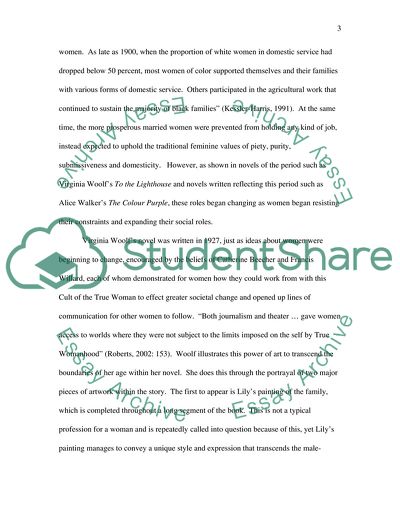Cite this document
(The Changing Role of Women in Terms of Pieces of Literature Coursework, n.d.)
The Changing Role of Women in Terms of Pieces of Literature Coursework. Retrieved from https://studentshare.org/gender-sexual-studies/1546306-critically-and-comparatively-examine-the-extent-to-which-virginia-woolfes-to-the-lighthouse-and-alice-walkers-the-colour-purple-reflects-the-changing-role
The Changing Role of Women in Terms of Pieces of Literature Coursework. Retrieved from https://studentshare.org/gender-sexual-studies/1546306-critically-and-comparatively-examine-the-extent-to-which-virginia-woolfes-to-the-lighthouse-and-alice-walkers-the-colour-purple-reflects-the-changing-role
(The Changing Role of Women in Terms of Pieces of Literature Coursework)
The Changing Role of Women in Terms of Pieces of Literature Coursework. https://studentshare.org/gender-sexual-studies/1546306-critically-and-comparatively-examine-the-extent-to-which-virginia-woolfes-to-the-lighthouse-and-alice-walkers-the-colour-purple-reflects-the-changing-role.
The Changing Role of Women in Terms of Pieces of Literature Coursework. https://studentshare.org/gender-sexual-studies/1546306-critically-and-comparatively-examine-the-extent-to-which-virginia-woolfes-to-the-lighthouse-and-alice-walkers-the-colour-purple-reflects-the-changing-role.
“The Changing Role of Women in Terms of Pieces of Literature Coursework”, n.d. https://studentshare.org/gender-sexual-studies/1546306-critically-and-comparatively-examine-the-extent-to-which-virginia-woolfes-to-the-lighthouse-and-alice-walkers-the-colour-purple-reflects-the-changing-role.


